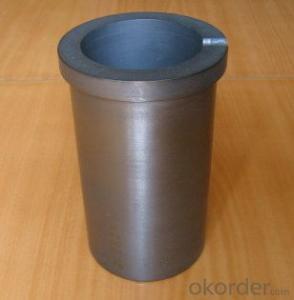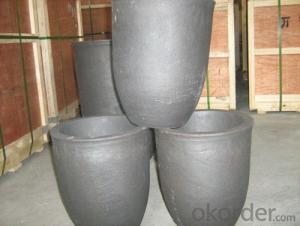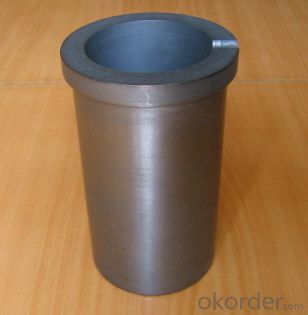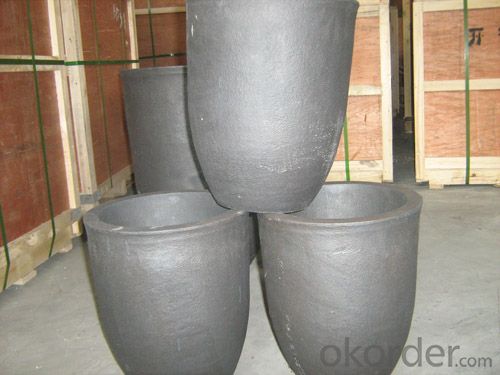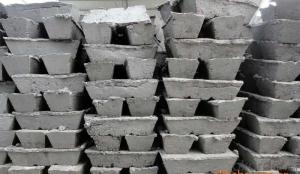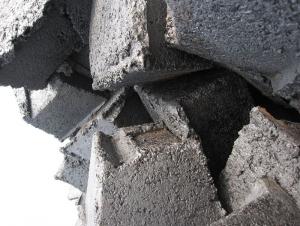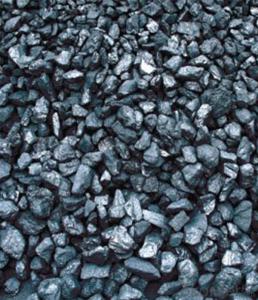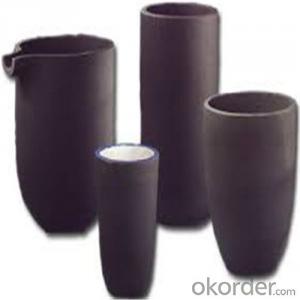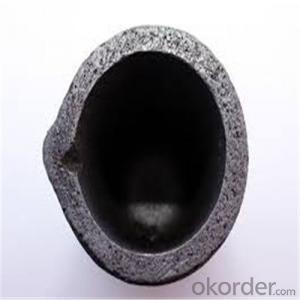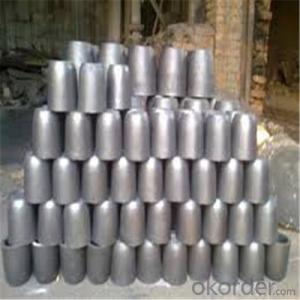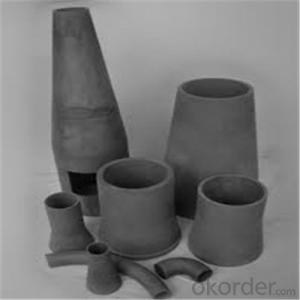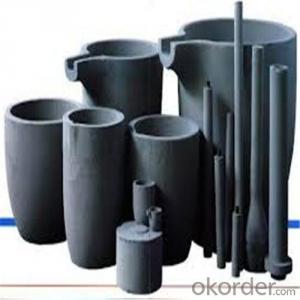Graphite Crucible For Melting Gold、Silver 、Copper
- Loading Port:
- Tianjin
- Payment Terms:
- TT OR LC
- Min Order Qty:
- 0 m.t.
- Supply Capability:
- 100000 m.t./month
OKorder Service Pledge
OKorder Financial Service
You Might Also Like
Features
1.Long working lifetime: its working lifetime is increased 3-5 times over normal clay-crucible due to the compact body formed under high pressure.
2.High thermal conductivity: high-density body and low apparent porosity greatly improve its heat conductivity.
3.New-style materials: new heat conduction material ensures faster heat conductivity and pollution-free product, reduces adherent slag.
4.Resistance to corrosion:better anti-corrosion than normal clay-crucible.
5.Resistance to oxidation: advanced process dramatically improves its oxidation resistance, which ensures persistent heat conductivity and long working lifetime.
6.High-strength: high-density body and logical structure make the product better compression property.
7.Eco-friendly: energy-efficient and pollution-free, not only ensure metal product purity, but also ensure sustainable development on environment.
8.Multi-function: Can be used in induction graphite crucible furnace
Packaging & Delivery
Packaging Details: | wooden box,usually according to detailed product. |
Delivery Detail: | Within 35 days after payment. |
Specification
Bulk Density | g/cc | 1.70-1.88 |
Specific Resistance | μΩ.m | 6.0-15.0 |
Compressive Strength | MPa | 30-80 |
Bending Strength | MPa | 20-45 |
Shore hardness | 30-70 | |
C.T.E.(100-600°C) | x10-6 /°C | 2.5-5.5 |
Ash | % | 0.01-0.2 |
Maximum Grain Size | mm | 0.044-0 |
Our services
Close customer contact through a global marketing network covering more than 90 countries
Professional technical and individual advice provided at customers‘ own sites
Detailed design proposals to solve customer-specific problems
Application-oriented training in key applications and special literature
Extensively equipped laboratories for analyses
Reliable and flexible delivery service
We can manafacture and export graphite electrodes in different grade ,shape and dimension.Whenever you need it ,please feel free to let us know.we promise you the top quality and lower price.
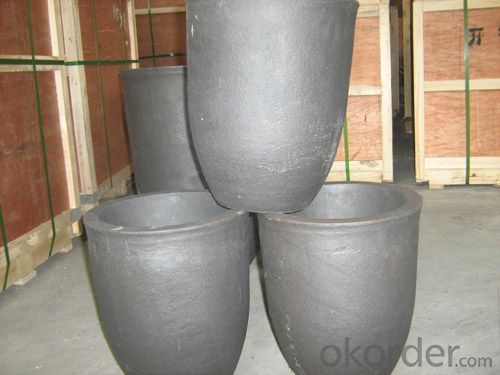
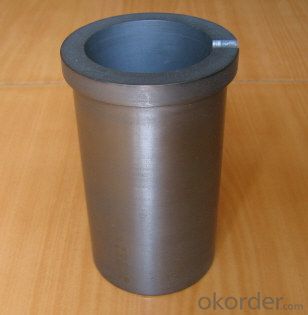
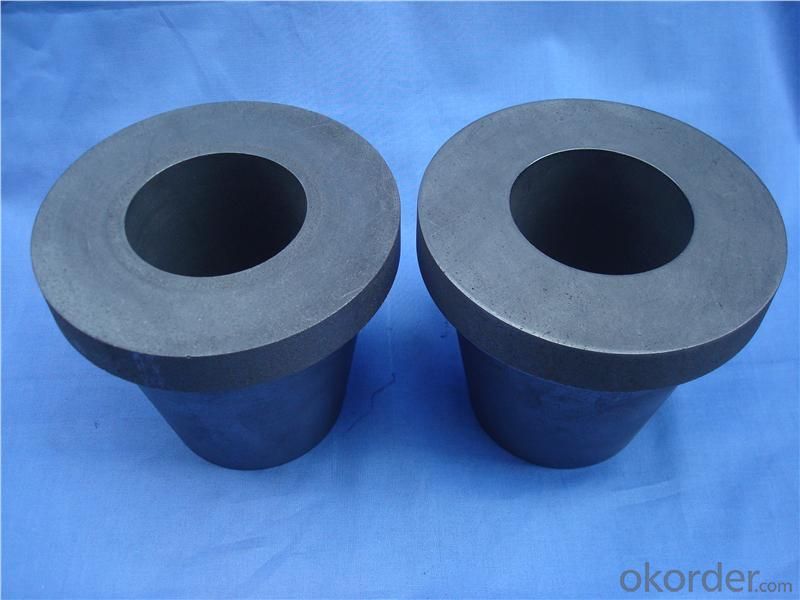
- Q: What are the consequences of increased carbon emissions on technological advancements?
- The consequences of increased carbon emissions on technological advancements can be significant. The primary consequence is the acceleration of climate change, which can lead to adverse effects such as rising global temperatures, sea-level rise, extreme weather events, and ecosystem disruptions. These consequences pose various challenges to technological advancements. On one hand, they create a pressing need for innovative solutions to mitigate and adapt to climate change, such as renewable energy sources, carbon capture and storage technologies, and sustainable agricultural practices. This can drive research and development in these areas, fostering technological advancements. On the other hand, increased carbon emissions can also divert resources and attention away from other technological advancements, as efforts are redirected towards climate change mitigation and adaptation strategies. Additionally, the consequences of climate change, such as natural disasters or resource scarcity, can disrupt technological infrastructure and impede further advancements. Therefore, while there can be opportunities for technological advancements in response to increased carbon emissions, the overall consequences can also present challenges and limitations.
- Q: What are the industrial uses of diamonds?
- Diamonds have a wide range of industrial uses due to their exceptional physical properties. One of the most common industrial uses of diamonds is in the manufacturing of cutting and grinding tools. Diamond-tipped saw blades, drill bits, and grinding wheels are highly sought after for their superior hardness and abrasion resistance. These tools are used to cut and shape hard materials like concrete, ceramics, and metals. Diamonds also find extensive applications in the electronics industry. They are used as heat sinks in high-power electronic devices and as abrasive materials for polishing and lapping electronic components. The thermal conductivity of diamonds allows them to efficiently dissipate heat, making them ideal for electronic devices that generate a lot of heat during operation. Furthermore, diamonds are used in the production of specialized windows, lenses, and prisms for various scientific and industrial applications. Their optical properties, such as high refractive index and low dispersion, make them valuable for creating precision optics used in lasers, spectroscopy, and telecommunications. In addition, diamonds have found niche uses in the medical and dental fields. They are used in surgical tools such as scalpels and dental drills due to their exceptional hardness and ability to retain sharp edges. Diamond coatings are also applied to medical implants and prosthetics to improve their wear resistance and biocompatibility. Lastly, diamonds are utilized in the oil and gas industry for drilling and exploration purposes. Diamond drill bits are capable of penetrating extremely hard rock formations, making them essential for extracting oil and natural gas from deep beneath the Earth's surface. Overall, the industrial uses of diamonds are vast and diverse, ranging from cutting and grinding tools to electronics, optics, medicine, and even oil and gas exploration. The unique properties of diamonds make them indispensable in numerous industrial applications, contributing to advancements in various fields.
- Q: What materials can be carbonitriding?
- Low temperature carbonitriding for high alloy tool steel, high-speed steel tools, etc., in temperature carbonitriding is under great pressure not only in carbon steel wear parts, high temperature carbonitriding is mainly used for medium carbon steel and alloy steel under great pressure.
- Q: How are fossil fuels formed from carbon?
- Fossil fuels are formed from carbon through a natural process that takes millions of years. The process begins with the remains of plants and animals that lived millions of years ago. These remains, which contain carbon, get buried under layers of sediment in oceans, swamps, and other bodies of water. Over time, the pressure from the layers of sediment and the heat from the Earth's crust cause a process called diagenesis to occur. During diagenesis, the organic matter in the remains undergoes chemical changes, transforming it into a substance known as kerogen. As more layers of sediment continue to accumulate, the temperature and pressure increase further. Eventually, the kerogen undergoes a process called catagenesis, where it is heated to even higher temperatures. This causes the kerogen to break down and transform into liquid and gaseous hydrocarbons, which are the main components of fossil fuels. The liquid hydrocarbons form what is known as crude oil or petroleum, while the gaseous hydrocarbons form natural gas. Both of these fossil fuels can be extracted from the Earth's crust through drilling. In summary, fossil fuels are formed from carbon through a complex and lengthy process involving the burial, pressure, and heat of organic matter over millions of years. This process transforms the carbon-rich remains into hydrocarbons, which become the valuable resources that we use as fossil fuels today.
- Q: What are fossil fuels and how are they formed?
- Fossil fuels are natural resources that are formed from the remains of ancient plants and animals. They are non-renewable sources of energy that have been used by humans for centuries. The three main types of fossil fuels are coal, oil, and natural gas. The formation of fossil fuels begins with the organic matter that comes from plants and animals. Over millions of years, this organic matter becomes buried deep within the Earth's crust. The process of fossilization occurs as layers of sediment build up over time, putting pressure and heat on the organic matter. In the case of coal, the organic matter is mostly plant material that has been compacted and heated over time. As the pressure and temperature increase, the plant material undergoes a chemical transformation, gradually turning into coal. The formation of oil and natural gas is slightly different. It starts with the remains of tiny marine microorganisms, such as plankton, that have settled at the bottom of ancient oceans. Over time, these organic materials become buried under layers of sediment and are subjected to immense heat and pressure. Under these conditions, the organic matter gets transformed into a mixture of hydrocarbons, which is the main component of oil and natural gas. The oil and gas then migrate through porous rocks until they are trapped by impermeable layers, forming oil or gas reservoirs. Overall, the formation of fossil fuels is a slow geological process that takes millions of years. It requires specific conditions of heat, pressure, and burial to convert the organic matter into coal, oil, or natural gas. Due to their limited availability and the environmental impact of their combustion, there is an increasing focus on transitioning to renewable energy sources as a more sustainable alternative.
- Q: How many electrons does carbon have?
- Carbon has 6 electrons.
- Q: Carbon emissions trading stocks latest list of carbon emissions trading stocks what?
- Deason shares and Evergreen Group (biomass industry development leading countries to cope with climate change "(2014-2020)" an important direction to encourage); Yongan forestry (the potential target of forest carbon sequestration forestry circular economy demonstration enterprise). In addition, according to statistics, Huayin electric power (600744), Shenzhen (000027) and other energy shares of Shenzhen emissions exchange.
- Q: What is coal?
- Coal is a black or brownish-black sedimentary rock that is primarily composed of carbon, along with various other elements such as hydrogen, sulfur, oxygen, and nitrogen. It is formed from the remains of plants that lived and died millions of years ago, accumulating in swampy environments. Over time, the layers of plant material were subjected to high pressure and heat, resulting in the formation of coal. Coal is one of the most abundant fossil fuels on Earth and has been used as a source of energy for centuries. It is typically extracted from underground or surface mines and can be found in different forms, including anthracite, bituminous, sub-bituminous, and lignite, with varying carbon content and heating value. Due to its high carbon content, coal is primarily used for electricity generation and as a fuel for industrial processes. When burned, it releases energy in the form of heat, which is converted into electricity through steam turbines. However, burning coal also releases greenhouse gases and other pollutants, contributing to air pollution and climate change. In addition to its use as a fuel, coal is also used in the production of steel and cement, as well as in various industrial processes. It is a versatile resource that has played a significant role in the development of modern societies, but its environmental impact and finite nature have led to increased efforts to shift towards cleaner and more sustainable energy sources.
- Q: How does carbon dioxide affect the Earth's climate?
- Carbon dioxide (CO2) is a greenhouse gas that plays a significant role in affecting the Earth's climate. When released into the atmosphere through natural and human activities such as deforestation, burning fossil fuels, and industrial processes, carbon dioxide traps heat from the sun and prevents it from escaping back into space. This process is commonly known as the greenhouse effect. The accumulation of carbon dioxide in the atmosphere leads to an increase in global temperatures, resulting in climate change. As CO2 levels rise, more heat is trapped, causing the Earth's average temperature to increase over time. This phenomenon is known as global warming. The consequences of increased carbon dioxide levels and subsequent climate change are far-reaching. Rising temperatures lead to the melting of glaciers and polar ice caps, which contribute to sea-level rise. This can result in coastal flooding, displacement of communities, and loss of biodiversity. Furthermore, altered weather patterns, including more frequent and intense heatwaves, droughts, and extreme weather events such as hurricanes and storms, are also linked to increased carbon dioxide levels. These events can have devastating impacts on ecosystems, agriculture, and human settlements. Moreover, elevated CO2 levels also affect the ocean's chemistry. As the oceans absorb carbon dioxide from the atmosphere, they become more acidic, a process known as ocean acidification. This poses a threat to marine life, particularly organisms with calcium carbonate shells, such as corals and shellfish. To mitigate the impacts of carbon dioxide on the Earth's climate, reducing greenhouse gas emissions is crucial. This can be achieved through transitioning to renewable energy sources, improving energy efficiency, promoting sustainable land use practices, and adopting cleaner technologies. Additionally, initiatives such as afforestation and reforestation can help absorb CO2 from the atmosphere, acting as carbon sinks. Addressing the issue of carbon dioxide and its impact on the Earth's climate is essential to safeguarding the planet's ecosystems, biodiversity, and human societies. By reducing carbon emissions, we can mitigate the effects of climate change and work towards a more sustainable future.
- Q: There are several allotropes of carbon
- Allotrope of carbon: diamond, graphite, carbon 60 (fullerene), amorphous carbon (charcoal, coke, activated carbon, etc.)
Send your message to us
Graphite Crucible For Melting Gold、Silver 、Copper
- Loading Port:
- Tianjin
- Payment Terms:
- TT OR LC
- Min Order Qty:
- 0 m.t.
- Supply Capability:
- 100000 m.t./month
OKorder Service Pledge
OKorder Financial Service
Similar products
Hot products
Hot Searches
Related keywords
